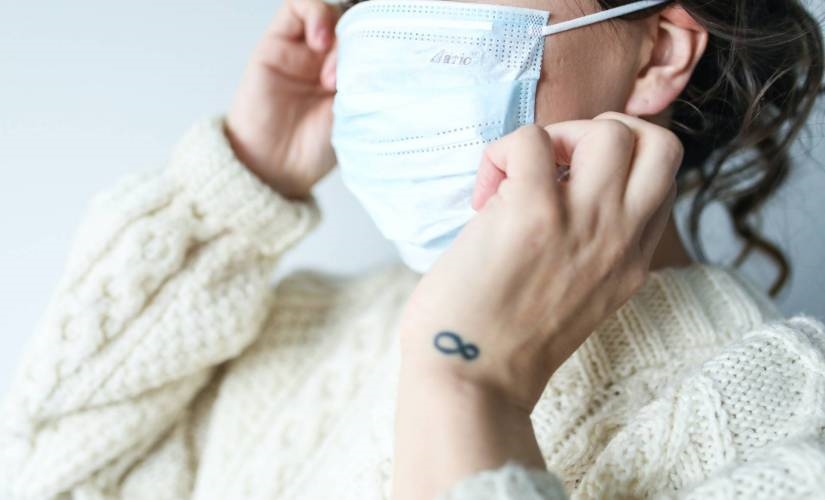5 Safety Aspects to Include in Your Work Stack in the Age of COVID
5 Safety Aspects to Include in Your Work Stack in the Age of COVID

As an owner or top executive, those figures should both boost your spirit and cause a bit of pause. Yes, your workers are mostly open to the idea of working shoulder-to-shoulder — figuratively, of course. However, they’re counting on you to make wellness and welfare decisions that will protect them from foreseeable exposure to coronavirus and other communicable conditions.
Of course, you can meet both the demand to have an onsite cadre of personnel and put measures in place to lower their health risks. You simply have to put a little thought into boosting your work stack and processes.
Below are several tools and measures that can work to keep your workers productive and empowered, as well as assured that you’ve kept their needs in mind.
1. Self-reporting systems
Privacy is essential, but so is the importance of knowing who on your team might be contagious. Tools like TeamSense allow workers to self-identify any health issues they’re having in an encrypted format that will only be seen by the employer. Team members receive daily texts at home and can conveniently indicate red flags.
Many people appreciate being able to send in daily symptom screening information discreetly rather than being examined or questioned in front of colleagues. Plus, staffers don’t need to download an app or give out anything other than a phone number to make the tool work.
2. Fast, touchless temperature checking
Everyone’s been through the point-the-phaser-thermometer drill. It works, but it’s clunking and not exactly a timesaver. Plus, it requires that one employee be dedicated to doing nothing but performing temperature checks for an undefined amount of time whenever someone walks in the door.
Devices like the FLIR Screen-EST camera and its lightning-fast skin temperature measuring ability have made it easier for corporate organizations, government agencies, and schools to evaluate large numbers of people in seconds. By adding a mounted thermal camera to your tech stack, you’ll free up workers—and free yourself from the possibility of human error.
3. Employee contact tracing
A huge part of containing and controlling COVID-19 has been instituting contact tracing whenever possible. As an employer, you can be a part of the solution by asking your workers to wear the POM Tracer device. Since the device is based on proximity, your employees can feel assured that their privacy is protected as the POM does not track employees or take personal information. Visitors can also be issued Pom Tracers to wear while in your building.
Once activated, the POM Tracer collects information on when and where employees crossed paths. It can also send alerts if two devices come within 6 feet as a reminder to social distance. If an individual later tests positive for coronavirus, the POM Tracer’s stores of information can be assessed to determine which colleagues might be at risk so they can get tested quickly.
4. Personal protective equipment
The age of the mask is upon us, and everyone from brands like Old Navy to independent Etsy sellers are making money selling unique, trendy mask wear. According to information from Johns Hopkins Medicine, just about any mask can provide some level of protection. Nevertheless, workers may not understand how to properly wear masks, have properly fitting masks, or keep their masks sanitized.
As an effort to put staffer safety ahead of profits, consider supplying workers with at least two masks as personal protective equipment (PPE). Treat the masks as part of a uniform. By standardizing and supplying face masks across your workforce, you remove any obstacles to people accessing safety gear. Worried you’ll get pushback from employees who see masks as a fashion statement? Think about creating a corporate mask that defines your strong culture.
5. Flexible scheduling
Across the country, many companies are seeing a rise in both retirement and absenteeism rates, especially in “essential” fields such as child care, health care and food production. In addition to actual COVID exposure, stress, childcare issues, and a general lack of flexibility all contribute to absenteeism.
By partnering with a workforce management platform like MyWorkChoice, you can take your existing schedule format and use it to create flexible shifts with seamless shift transitions. This allows employees to set their own schedule of up to 40 hours per week, a benefit which 75 percent of hourly employees say would allow them to be less worried about going back to work. And if they have any sign of a COVID symptom, they can easily reschedule their shift to get tested, keeping your workplace safer.
Your people are eager to do their best work and help move your company forward. Take away their barriers to success by overlaying your old-norm processes with a few new-norm systems to foster a sense of security throughout your facility. Some of these tools may even support you in flu seasons to come, after COVID is in our rear-view mirror.
The post 5 Safety Aspects to Include in Your Work Stack in the Age of COVID appeared first on ReadWrite.
(19)


